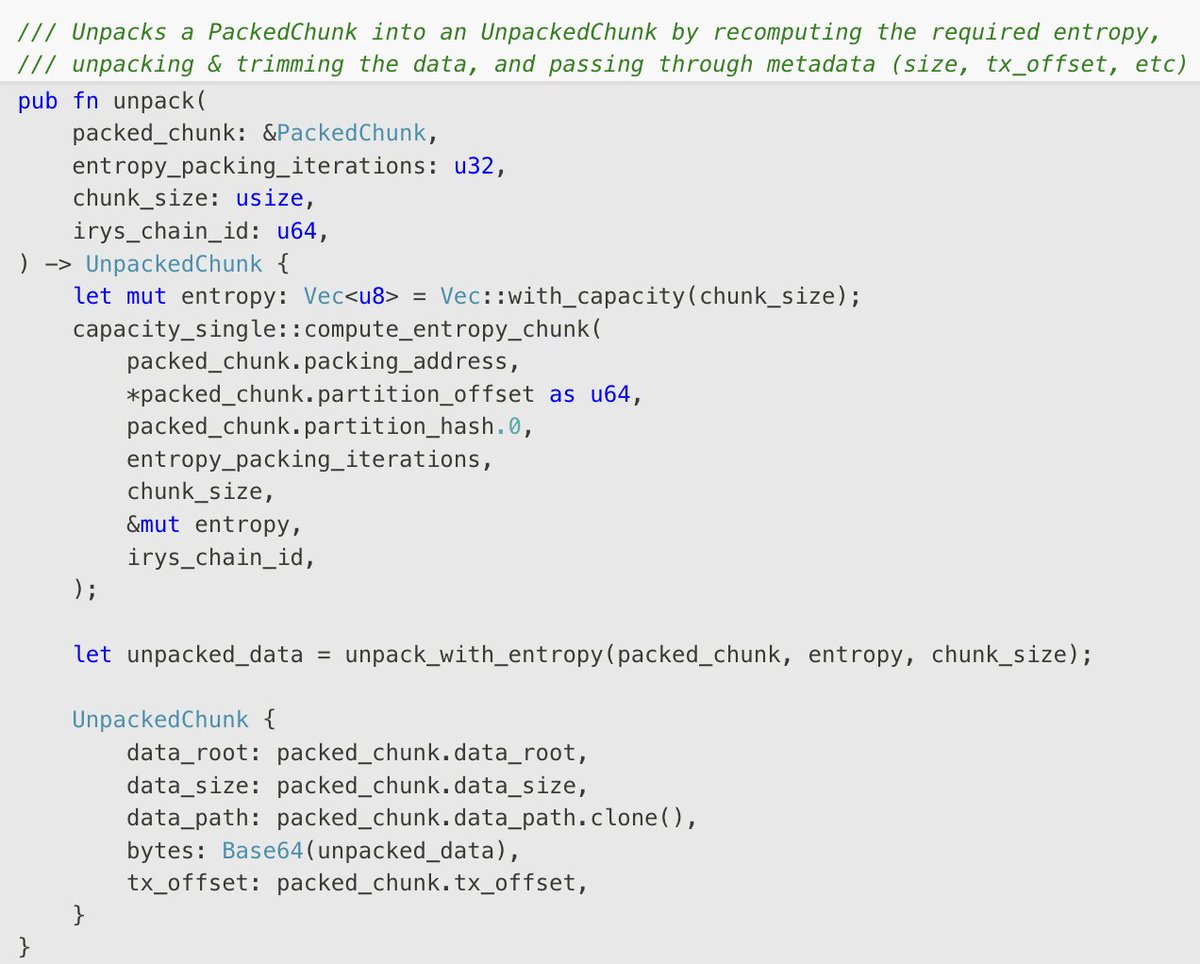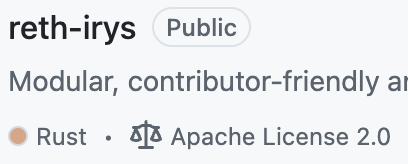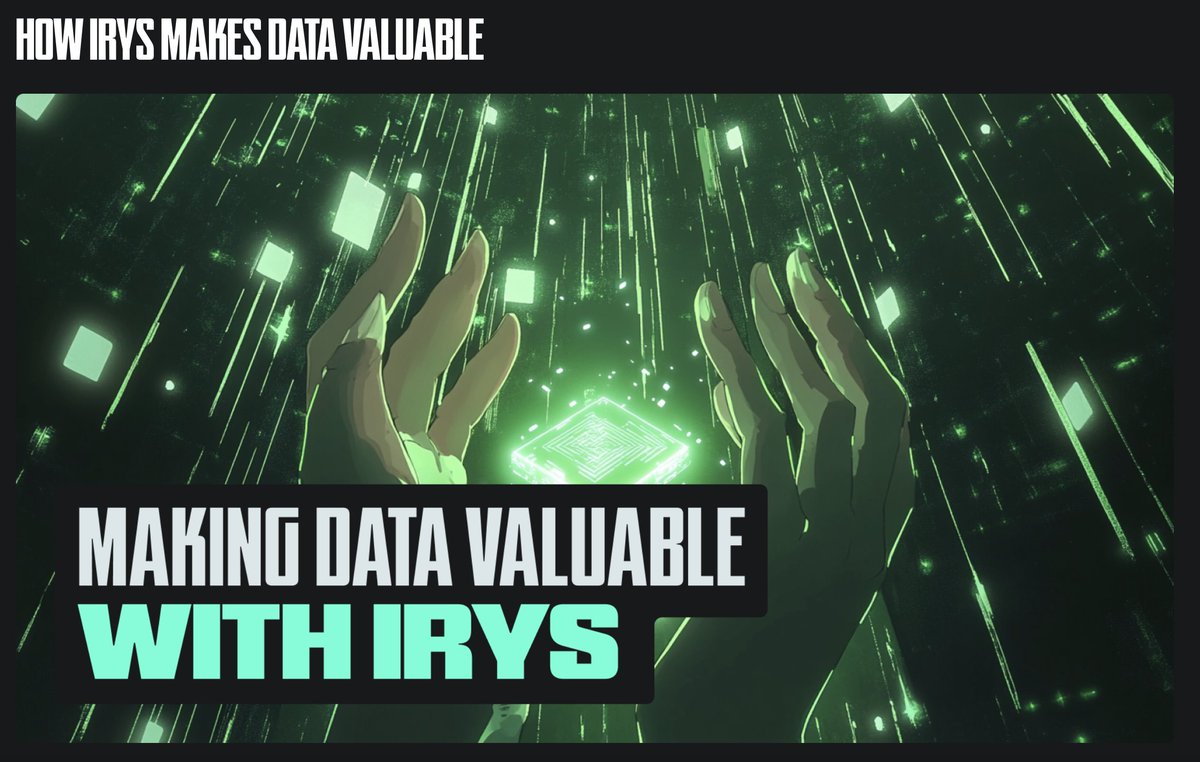Is AI's data L1 or a decentralized storage project?
As a developer with some understanding of the blockchain storage field, I recently researched the @irys_xyz project. To be honest, the relationship between this project and AI is not very significant; it actually belongs to a typical combination of decentralized storage and incentive layers. From their own blog posts, it can be seen that the positioning is still to let data realize its inherent value.
I have seen quite a few projects in the decentralized storage space, from early IPFS and Storj to later Arweave and Filecoin, and various Layer 2 storage solutions. As a newcomer in this field, Irys indeed has some noteworthy technical features.
1️⃣ Project Positioning and Philosophy
Irys claims to be a storage Layer 1 designed for AI, but it is essentially a decentralized data storage network, and its design philosophy is somewhat unique. Unlike Filecoin's purely storage market model, and different from Arweave's one-time payment for permanent storage, Irys seems to be trying to solve a core problem: how to ensure that the stored data can actually be accessed.
From the code structure, it can be seen that Irys adopts a dual ledger system: Permanent Ledger and Term Ledger. This design concept is quite interesting; it allows data to flow between different storage levels, gradually "promoting" from temporary storage to permanent storage.
2️⃣ Technical Architecture Analysis
2.1 Consensus Mechanism: The Choice of VDF
Irys's most interesting technical choice is using VDF (Verifiable Delay Function) as the core of its consensus mechanism.
VDF is a relatively novel technology in the blockchain field. Its core idea is to create a function that requires sequential computation and cannot be parallelized, thus generating a predictable time delay. Irys's VDF is implemented based on SHA-256, where each step requires a certain amount of computation time, but verification can be completed quickly.
From a historical perspective, VDF was first proposed by Stanford's Dan Boneh and others. Chia also uses similar technology, but Irys's implementation has a clever aspect: it introduces a periodic "reset" mechanism to prevent miners from pre-computing too many steps. This design is quite pragmatic and addresses a classic problem faced by VDF.
2.2 Proof-of-Access: Balancing Ideal and Reality
Irys claims to use a "Proof-of-Access" mining mechanism, which sounds very appealing. From the code, the system indeed requires miners to access and unpack the stored data blocks. Data is stored through entropy packaging, and miners need to recalculate entropy to unpack the data. This design theoretically ensures data accessibility.
However, to be honest, the effectiveness of this "proof of access" still raises questions. Historically, we have seen too many similar claims that ultimately faced challenges in incentive mechanism design. What truly guarantees long-term data accessibility is often economic incentives rather than the technical means themselves.
2.3 Deep Integration with Reth
One thing that impressed me is Irys's deep reliance on Reth; the entire project makes extensive use of Reth's components, even having its own forked version. This choice is quite smart—Reth is among the most efficient in various Ethereum clients.
3️⃣ Storage Economics Design
From an economic model perspective, Irys's design is quite complex, with over 10 parameters to calculate. It considers factors such as time decay of storage costs, price fluctuation control, and multi-replica requirements. This complexity is both an advantage and a disadvantage. The advantage is that the model is closer to reality, considering the impact of technological advancements on storage costs; the disadvantage is that complex economic models often struggle to maintain stability in practice.
Especially the design of the "decay_rate" is theoretically elegant, but whether it can work as expected in actual operation still needs time to verify.
4️⃣ Evaluation of Technical Innovations
4.1 Data Packaging and CUDA Optimization
Irys has made several optimizations in data packaging, even supporting CUDA acceleration. This focus on performance is commendable, as the performance of the storage network directly affects user experience.
4.2 Actual Effects of VDF
Choosing VDF as a time-proof technology makes sense, but several issues need attention:
4.2.1. Hardware Dependency: Differences in computing power across different hardware may lead to inaccurate time predictions.
4.2.2. Network Latency: In a distributed environment, network latency may affect the synchronization effect of VDF.
4.2.3. Energy Consumption: Continuous SHA-256 computation is not environmentally friendly.
4️⃣ Comparison with Competitors
Compared to Arweave, Irys's dual ledger design is more flexible but also more complex. Arweave's one-time payment for permanent storage model is simple and direct, while Irys's layered storage requires more complex data migration logic.
Compared to Filecoin, Irys focuses more on the actual accessibility of data rather than just storage proof.
Compared to IPFS, Irys attempts to solve the lack of incentive mechanisms in IPFS, but at the cost of introducing a complex blockchain consensus mechanism.
5️⃣ Real Challenges and Prospects
From a technical perspective, Irys's design has certain innovations, especially the combination of VDF and PoA and the dual ledger system. However, the challenges faced by the project are also quite evident:
5.1. Ecosystem Development: The success of decentralized storage projects largely depends on ecosystem development, which is not something that technology alone can solve.
5.2. Long-term Stability of Incentive Mechanisms: Whether complex economic models can maintain balance in actual operation still needs time to verify.
5.3. Intense Competition: This space already has many mature competitors, and new projects need to have sufficiently strong differentiation advantages.
Disclaimer:
This article is based on an analysis of the Irys project code, focusing on its technical architecture and design philosophy. As a project under development, its final performance still needs to be verified in actual operation. The evaluations in this article are based on the current code implementation and design documents and do not constitute investment advice.
Show original


5.7K
30
The content on this page is provided by third parties. Unless otherwise stated, OKX is not the author of the cited article(s) and does not claim any copyright in the materials. The content is provided for informational purposes only and does not represent the views of OKX. It is not intended to be an endorsement of any kind and should not be considered investment advice or a solicitation to buy or sell digital assets. To the extent generative AI is utilized to provide summaries or other information, such AI generated content may be inaccurate or inconsistent. Please read the linked article for more details and information. OKX is not responsible for content hosted on third party sites. Digital asset holdings, including stablecoins and NFTs, involve a high degree of risk and can fluctuate greatly. You should carefully consider whether trading or holding digital assets is suitable for you in light of your financial condition.

